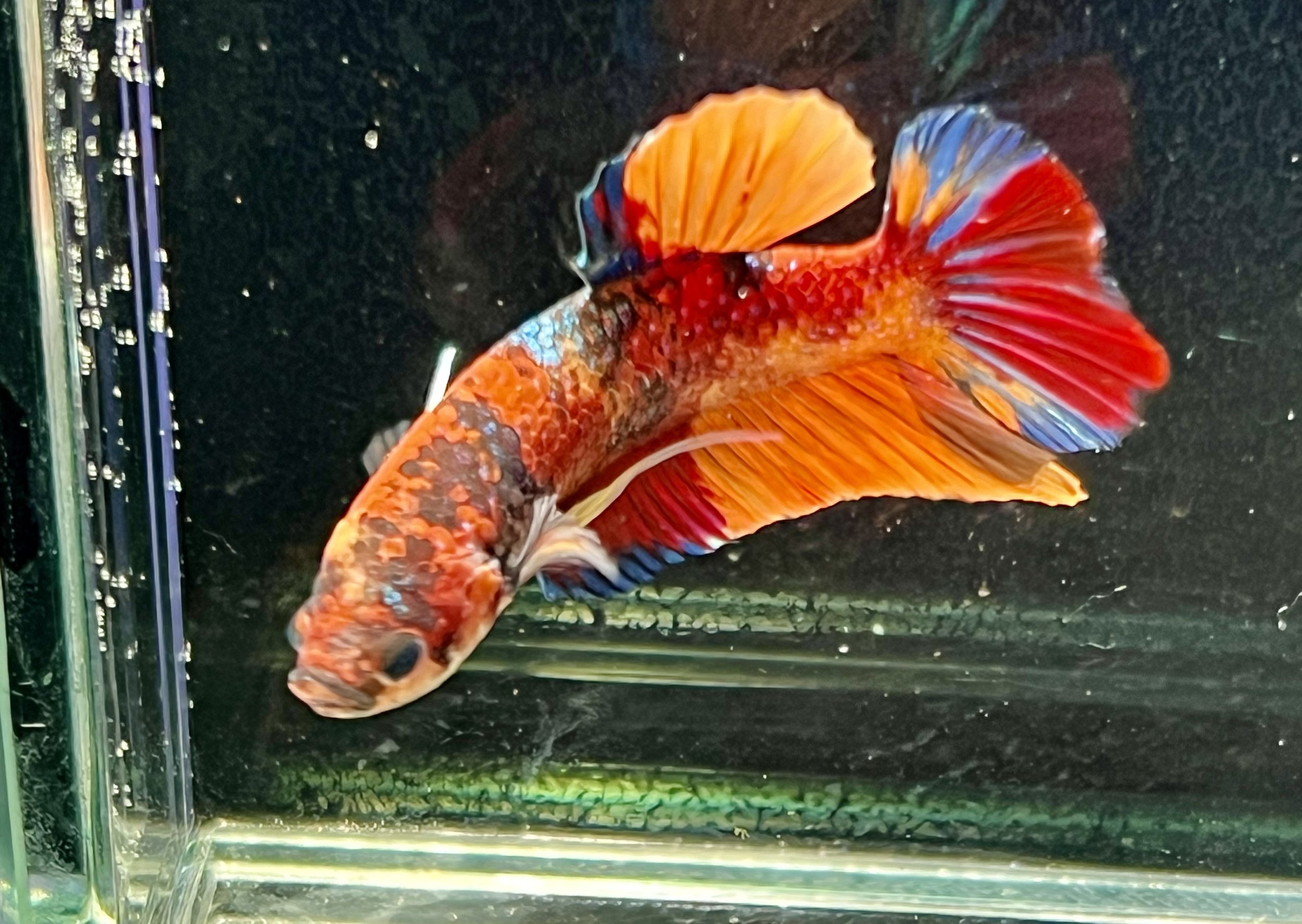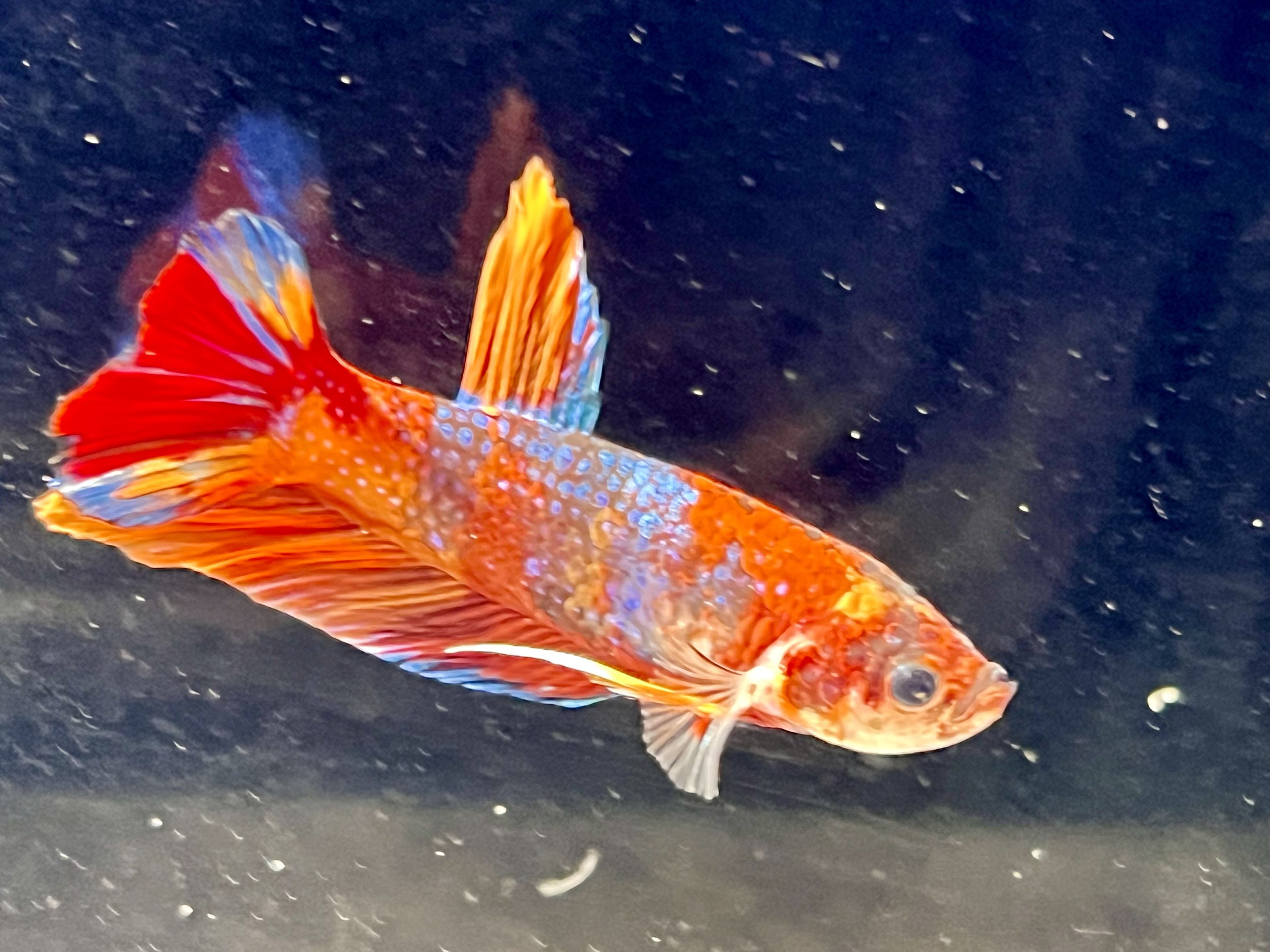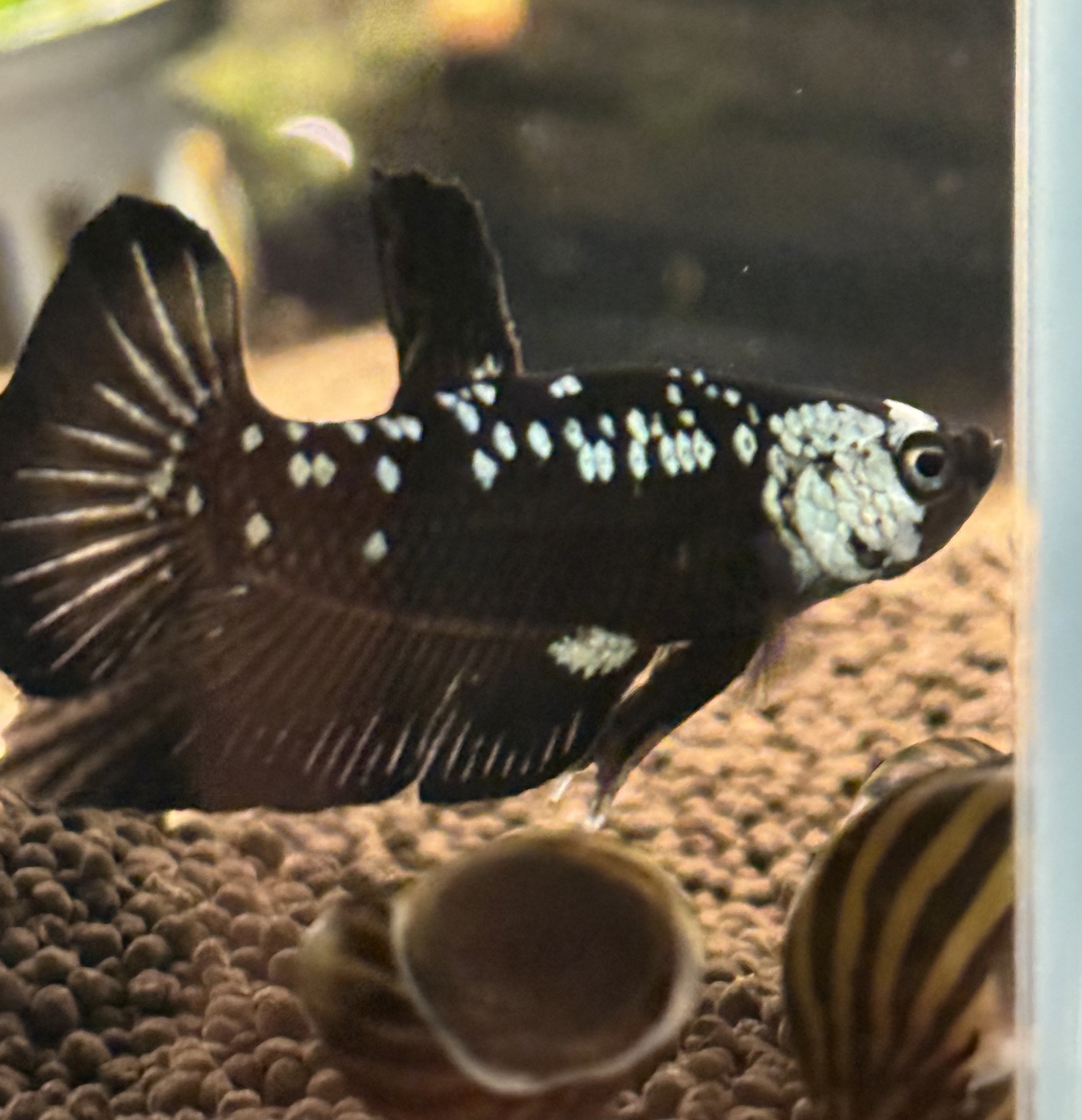 Image 1 of 2
Image 1 of 2

 Image 2 of 2
Image 2 of 2



Betta Albimarginata- WILD PAIR
The Betta albimarginata, commonly known as the Whiteseam Fighter, is a small, mouthbrooding betta species native to Indonesia, particularly the Sebuku and Malinau regions. This species is appreciated for its unique reproductive behavior and distinctive appearance, making it a fascinating addition to specialized freshwater aquariums.
Physically, Betta albimarginata exhibits a slender body, with males displaying more vibrant coloration compared to females. Both sexes feature characteristic white margins on their fins, which is the origin of their common name. Adults typically reach a size of 1.5 to 2 inches (3.8 to 5 centimeters).
In the aquarium, Betta albimarginata thrive in well-structured tanks that mimic their natural environment. A tank of at least 10 gallons is suitable for a pair or trio, with larger tanks needed for multiple males. A soft, sandy substrate, dense plant cover, and the addition of leaf litter and driftwood help create a comfortable setting. Low lighting and floating plants enhance their natural behaviors and reduce stress.
Water parameters should be stable, as these fish prefer soft, acidic conditions with a pH range of 4.0 to 6.5 and temperatures between 70°F to 85°F (21°C to 29°C). Low hardness is ideal, and frequent water changes are necessary to maintain water quality. A gentle filtration system should be used to avoid strong currents.
Feeding Betta albimarginata requires a diet rich in protein, as they are micro-predators. They thrive on live and frozen foods such as brine shrimp, bloodworms, daphnia, and micro worms. Some individuals may accept high-quality pellets or flakes, but live and frozen foods are preferred to maintain their health and vibrant coloration.
Betta albimarginata are relatively peaceful but can be territorial, especially during breeding. They can be kept in species-only tanks or with small, non-aggressive fish that prefer similar water conditions. Avoid housing them with fin-nipping or overly aggressive species.
Breeding Betta albimarginata is relatively straightforward, as they are paternal mouthbrooders. After spawning, the female deposits eggs, which the male collects and incubates in his mouth for 10 to 14 days. During this period, he will not eat and may become reclusive. Once the fry are released, they should be fed infusoria or newly hatched brine shrimp. Providing ample hiding spots and stable water conditions increases breeding success.
Overall, Betta albimarginata is a captivating and rewarding species that allows aquarists to observe fascinating parental care behaviors. Their small size, unique mouthbrooding reproduction, and striking appearance make them an excellent choice for experienced betta keepers looking to maintain a wild-type species in a well-maintained aquarium.
The Betta albimarginata, commonly known as the Whiteseam Fighter, is a small, mouthbrooding betta species native to Indonesia, particularly the Sebuku and Malinau regions. This species is appreciated for its unique reproductive behavior and distinctive appearance, making it a fascinating addition to specialized freshwater aquariums.
Physically, Betta albimarginata exhibits a slender body, with males displaying more vibrant coloration compared to females. Both sexes feature characteristic white margins on their fins, which is the origin of their common name. Adults typically reach a size of 1.5 to 2 inches (3.8 to 5 centimeters).
In the aquarium, Betta albimarginata thrive in well-structured tanks that mimic their natural environment. A tank of at least 10 gallons is suitable for a pair or trio, with larger tanks needed for multiple males. A soft, sandy substrate, dense plant cover, and the addition of leaf litter and driftwood help create a comfortable setting. Low lighting and floating plants enhance their natural behaviors and reduce stress.
Water parameters should be stable, as these fish prefer soft, acidic conditions with a pH range of 4.0 to 6.5 and temperatures between 70°F to 85°F (21°C to 29°C). Low hardness is ideal, and frequent water changes are necessary to maintain water quality. A gentle filtration system should be used to avoid strong currents.
Feeding Betta albimarginata requires a diet rich in protein, as they are micro-predators. They thrive on live and frozen foods such as brine shrimp, bloodworms, daphnia, and micro worms. Some individuals may accept high-quality pellets or flakes, but live and frozen foods are preferred to maintain their health and vibrant coloration.
Betta albimarginata are relatively peaceful but can be territorial, especially during breeding. They can be kept in species-only tanks or with small, non-aggressive fish that prefer similar water conditions. Avoid housing them with fin-nipping or overly aggressive species.
Breeding Betta albimarginata is relatively straightforward, as they are paternal mouthbrooders. After spawning, the female deposits eggs, which the male collects and incubates in his mouth for 10 to 14 days. During this period, he will not eat and may become reclusive. Once the fry are released, they should be fed infusoria or newly hatched brine shrimp. Providing ample hiding spots and stable water conditions increases breeding success.
Overall, Betta albimarginata is a captivating and rewarding species that allows aquarists to observe fascinating parental care behaviors. Their small size, unique mouthbrooding reproduction, and striking appearance make them an excellent choice for experienced betta keepers looking to maintain a wild-type species in a well-maintained aquarium.
The Betta albimarginata, commonly known as the Whiteseam Fighter, is a small, mouthbrooding betta species native to Indonesia, particularly the Sebuku and Malinau regions. This species is appreciated for its unique reproductive behavior and distinctive appearance, making it a fascinating addition to specialized freshwater aquariums.
Physically, Betta albimarginata exhibits a slender body, with males displaying more vibrant coloration compared to females. Both sexes feature characteristic white margins on their fins, which is the origin of their common name. Adults typically reach a size of 1.5 to 2 inches (3.8 to 5 centimeters).
In the aquarium, Betta albimarginata thrive in well-structured tanks that mimic their natural environment. A tank of at least 10 gallons is suitable for a pair or trio, with larger tanks needed for multiple males. A soft, sandy substrate, dense plant cover, and the addition of leaf litter and driftwood help create a comfortable setting. Low lighting and floating plants enhance their natural behaviors and reduce stress.
Water parameters should be stable, as these fish prefer soft, acidic conditions with a pH range of 4.0 to 6.5 and temperatures between 70°F to 85°F (21°C to 29°C). Low hardness is ideal, and frequent water changes are necessary to maintain water quality. A gentle filtration system should be used to avoid strong currents.
Feeding Betta albimarginata requires a diet rich in protein, as they are micro-predators. They thrive on live and frozen foods such as brine shrimp, bloodworms, daphnia, and micro worms. Some individuals may accept high-quality pellets or flakes, but live and frozen foods are preferred to maintain their health and vibrant coloration.
Betta albimarginata are relatively peaceful but can be territorial, especially during breeding. They can be kept in species-only tanks or with small, non-aggressive fish that prefer similar water conditions. Avoid housing them with fin-nipping or overly aggressive species.
Breeding Betta albimarginata is relatively straightforward, as they are paternal mouthbrooders. After spawning, the female deposits eggs, which the male collects and incubates in his mouth for 10 to 14 days. During this period, he will not eat and may become reclusive. Once the fry are released, they should be fed infusoria or newly hatched brine shrimp. Providing ample hiding spots and stable water conditions increases breeding success.
Overall, Betta albimarginata is a captivating and rewarding species that allows aquarists to observe fascinating parental care behaviors. Their small size, unique mouthbrooding reproduction, and striking appearance make them an excellent choice for experienced betta keepers looking to maintain a wild-type species in a well-maintained aquarium.






